The seminar brought together experts to collaborate, exchange knowledge, and build national capability and resilience against CBRNE threats.
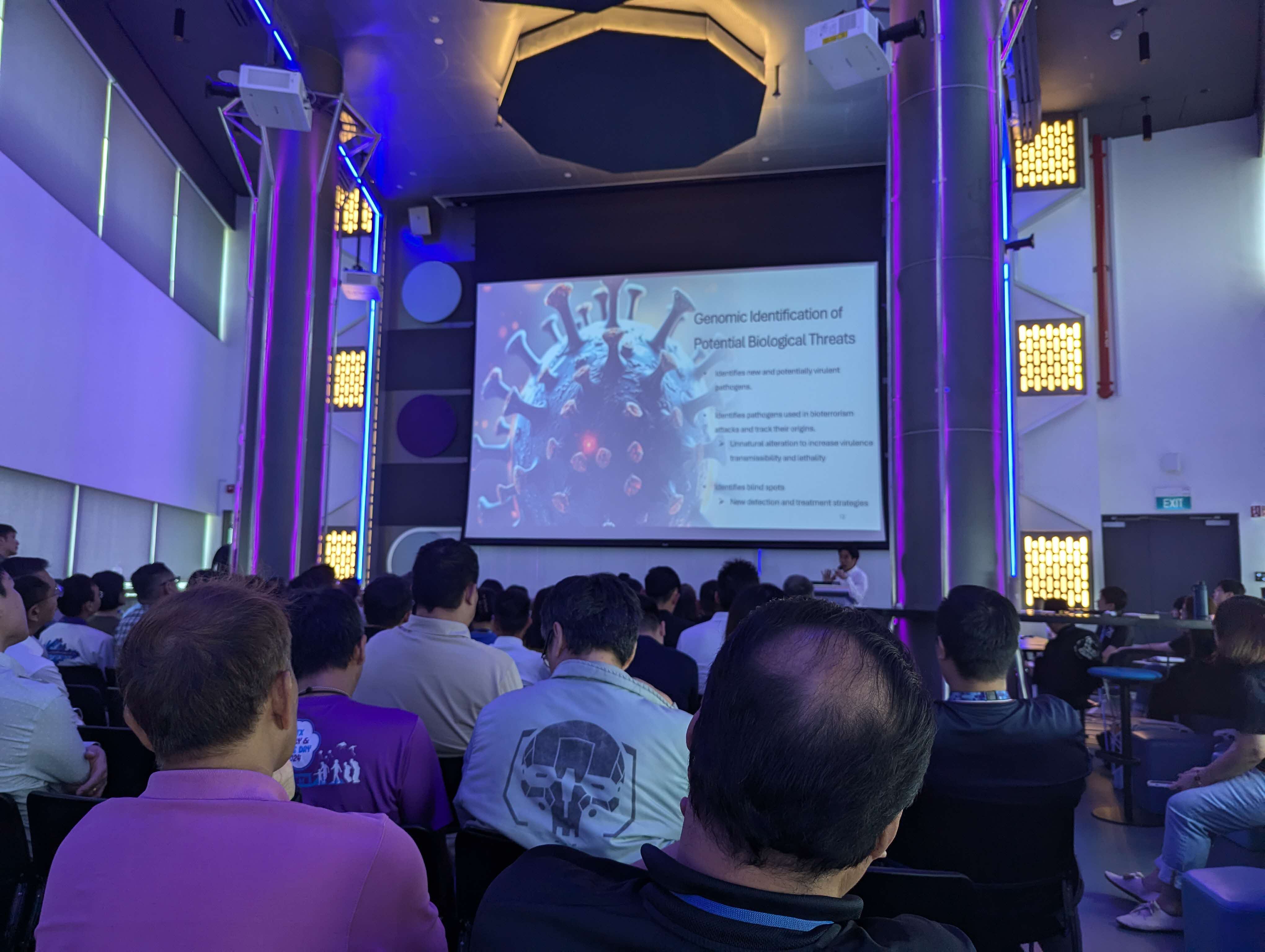
Bioterrorism was one of the CBRNE threats discussed during the seminar. (Photo: HTX)
Homeland security agencies around the world must constantly update their countermeasures to protect their populations from Chemical, Biological, Radiological, Nuclear, and Explosives (CBRNE) threats.
This was the key message at a recent seminar attended by HTX’s CBRNE Centre of Expertise (CoE). At the event themed “CBRNE: A Complex Web of Threats of Countermeasures”, the CBRNE CoE got to share its insights into understanding and countering CBRNE threats with its counterparts from various fields.
Held on 3 October 2024 at the HTX headquarters, the seminar was organised by the CBRNE CoE and featured a host of subject matter experts, all of whom agreed on the imperative to constantly update countermeasures.
The event was aimed at bringing together like-minded experts to collaborate, exchange valuable knowledge and experience, and build national capability and resilience against CBRNE threats.
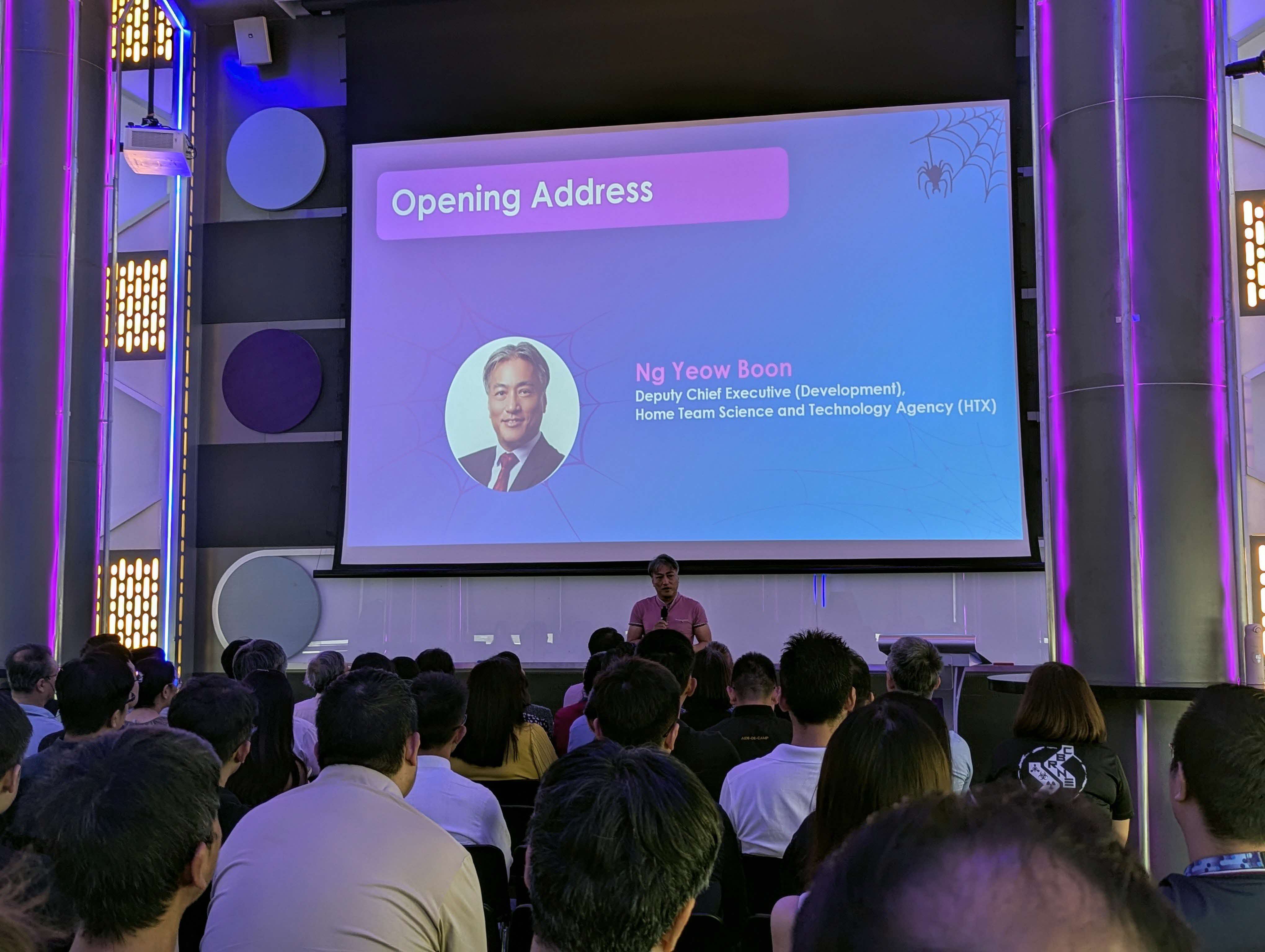
DCE(D) Ng Yeow Boon’s opening address. (Photo: HTX)
Over 80 experts attended the seminar, with 70% coming from Singapore government agencies, including the Home Team, the Ministry of Defence, DSO National Laboratories, the Health Sciences Authority (HSA), the National Environment Agency (NEA), the National Parks Board (NParks), and the Singapore Food Agency (SFA). The remaining participants were from HTX’s industry and academic partners.
HTX’s Deputy Chief Executive (Development) Ng Yeow Boon kicked off the seminar by urging CBRNE practitioners to pay attention to new and emerging threats, and to update their operations and develop new countermeasures to deal with them. He also highlighted the danger of complacency and warned that threat actors are not sitting still.
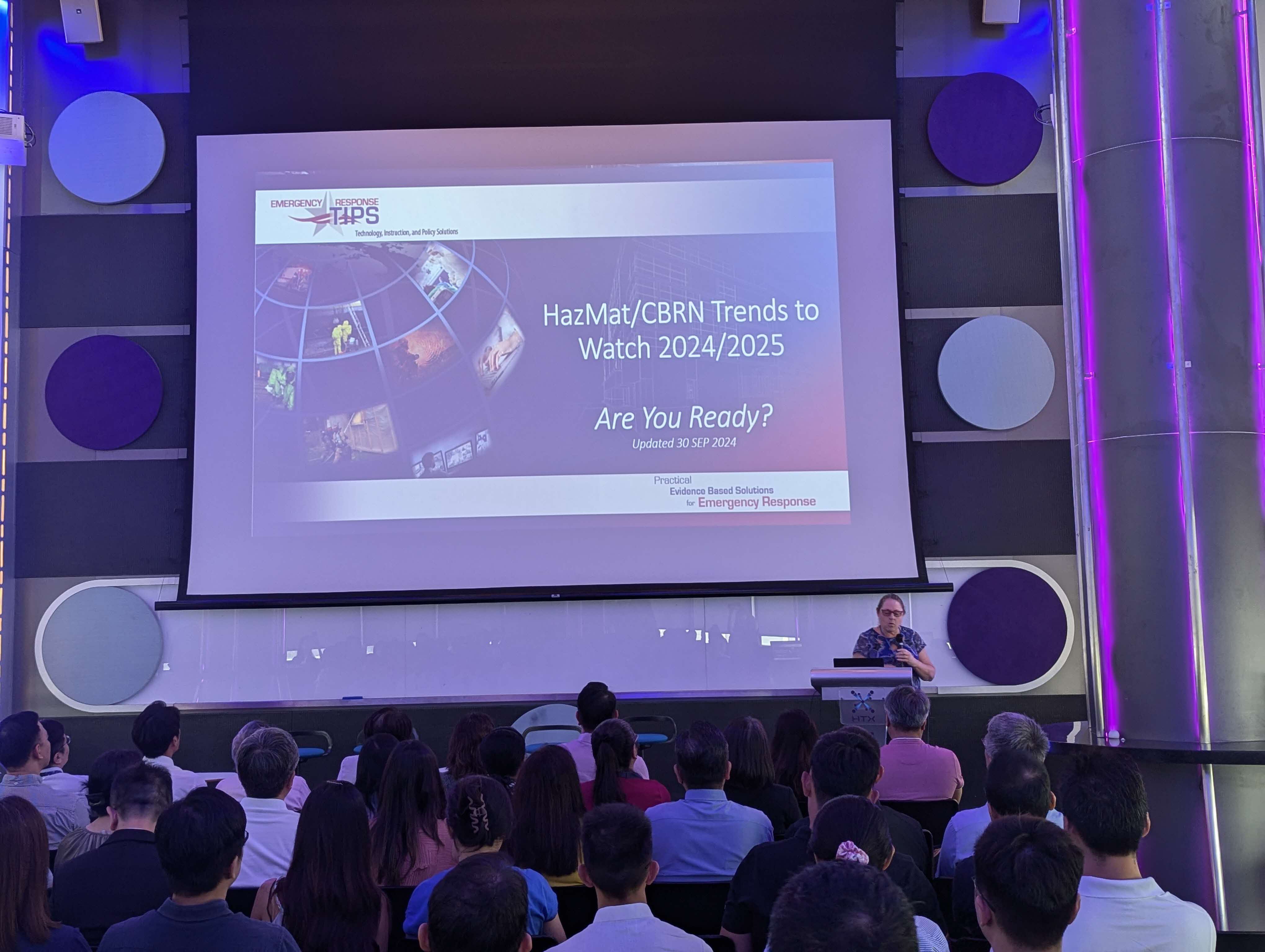
Dr Christina Baxter shares her research on the latest CBRNE threats. (Photo: HTX)
The first speaker was Dr Christina Baxter, a renowned CBRNE expert who served as the CBRNE programme manager at the US Department of Defence for more than five years. Dr Baxter, who is currently the CEO of Emergency Response TIPS, LLC, gave a presentation that highlighted the increasing sophistication of threat actors, and analysed the latest trends in the different types of CBRNE threats posed by them. She then discussed how new and existing technologies can be combined to detect and mitigate these threats.
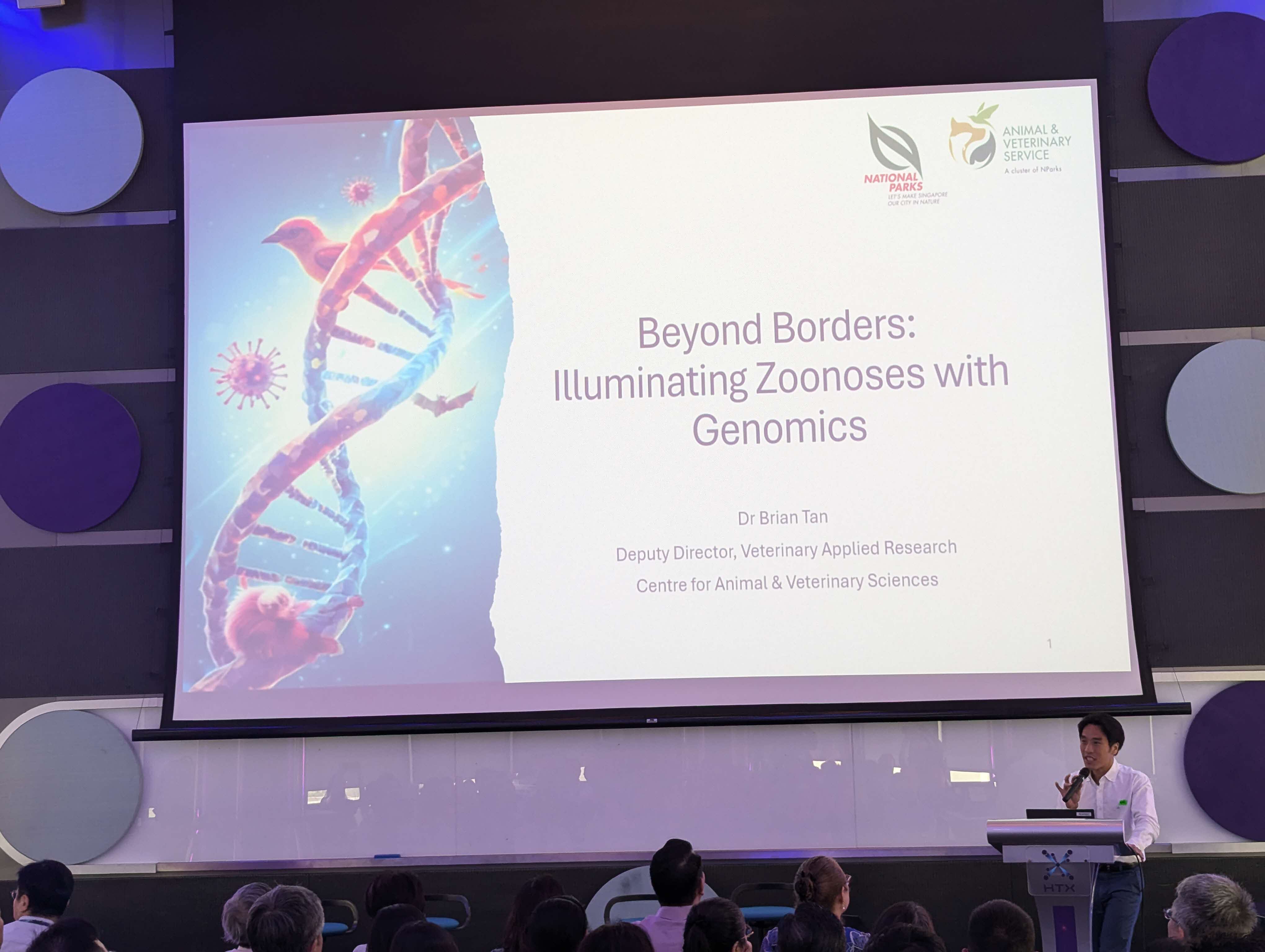
Dr Brian Tan discussing how genomic surveillance can help the authorities keep a handle on the threat of zoonotic diseases. (Photo: HTX)
The second speaker was Dr Brian Tan, Deputy Director (Veterinary Applied Research), Centre for Animal and Veterinary Sciences, National Parks Board. He discussed the threat posed by zoonotic diseases, which are diseases that can jump from animals to humans. Such diseases, which include HIV, anthrax, and monkeypox, can spread through natural outbreaks or even bioterrorism.
Dr Tan then discussed how bio-surveillance networks can be set up to monitor outbreaks and the spread of such diseases, and how genomic surveillance can be used to track the spread and evolution of such diseases in the population. This, he pointed out, can help the authorities pinpoint the origin of an outbreak and predict how it may evolve in the future.
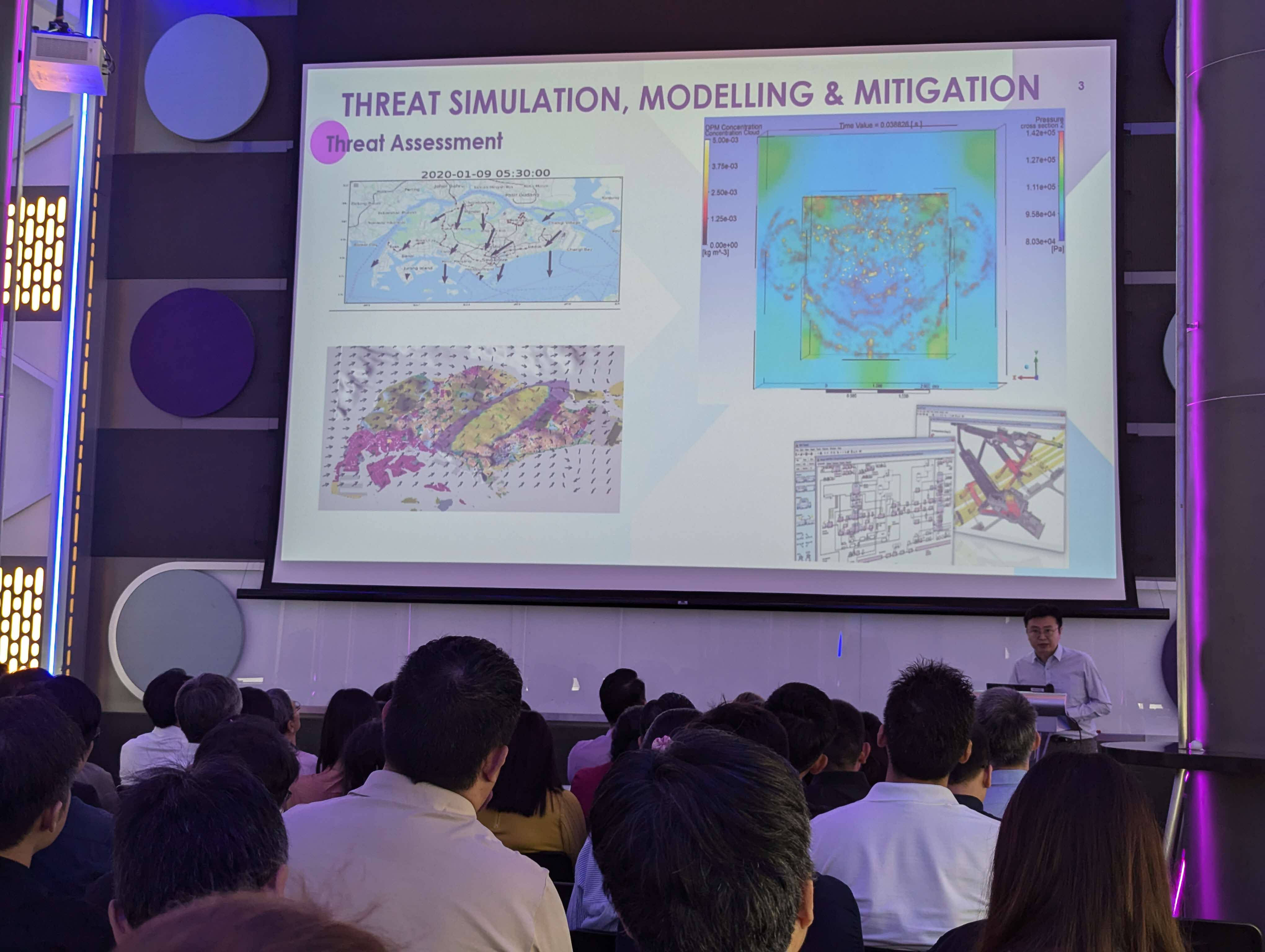
Dr Ma Yifei discussing the different examples of modelling and simulation used by CBRNE CoE. (Photo: HTX)
Dr Ma Yifei, Deputy Director (Threat Simulation and Mitigation) at HTX’s CBRNE CoE, was the third speaker. He discussed how modelling and simulation (M&S) can be powerful tools to understand and counter CBRNE threats. One example he discussed was the use of M&S to determine the most optimal locations to install eNoses around Singapore to quickly detect leaks of dangerous gases and other CBRNE threats. Another example he discussed was last year’s chemical plume trial, which tested the effectiveness of different CBRNE countermeasures.
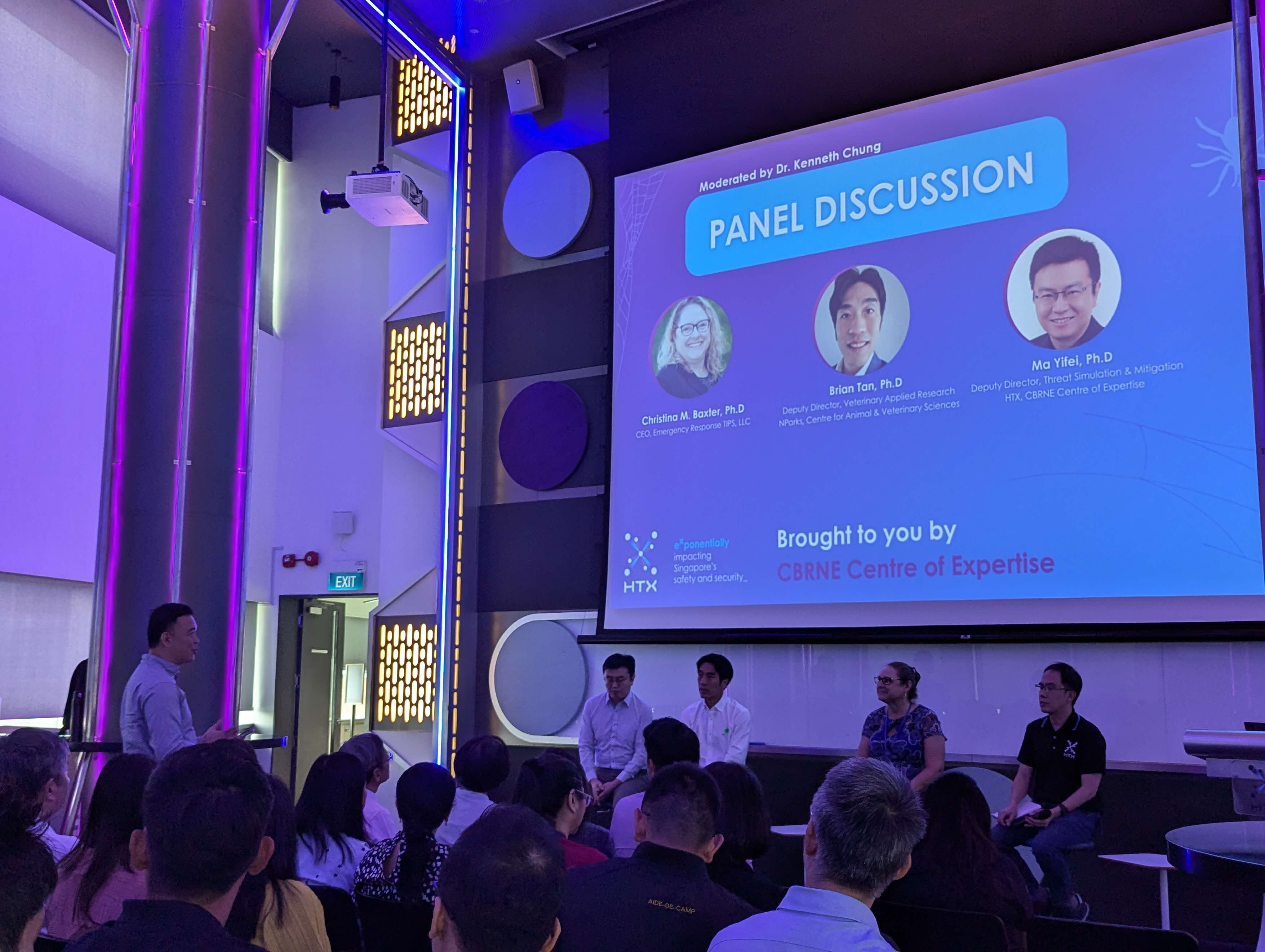
The speakers answer questions from the audience. (Photo: HTX)
The final segment was a panel discussion featuring the three speakers and moderated by Dr Kenneth Chung, Acting Head (CBRNE Research), CBRNE CoE. The speakers also answered questions from the audience members.
May Ong, the director of HTX’s CBRNE CoE, closed the event by talking about how threats could converge or become interconnected, thus making it more difficult for homeland security professionals to address them. She also highlighted how factors such as globalisation, climate change and human behaviour can further heighten threat vulnerability.
She then urged whole-of-government agencies, industry players and academia to share knowledge and experience so that they can create more sustainable solutions and capability to counter existing and new emerging threats.
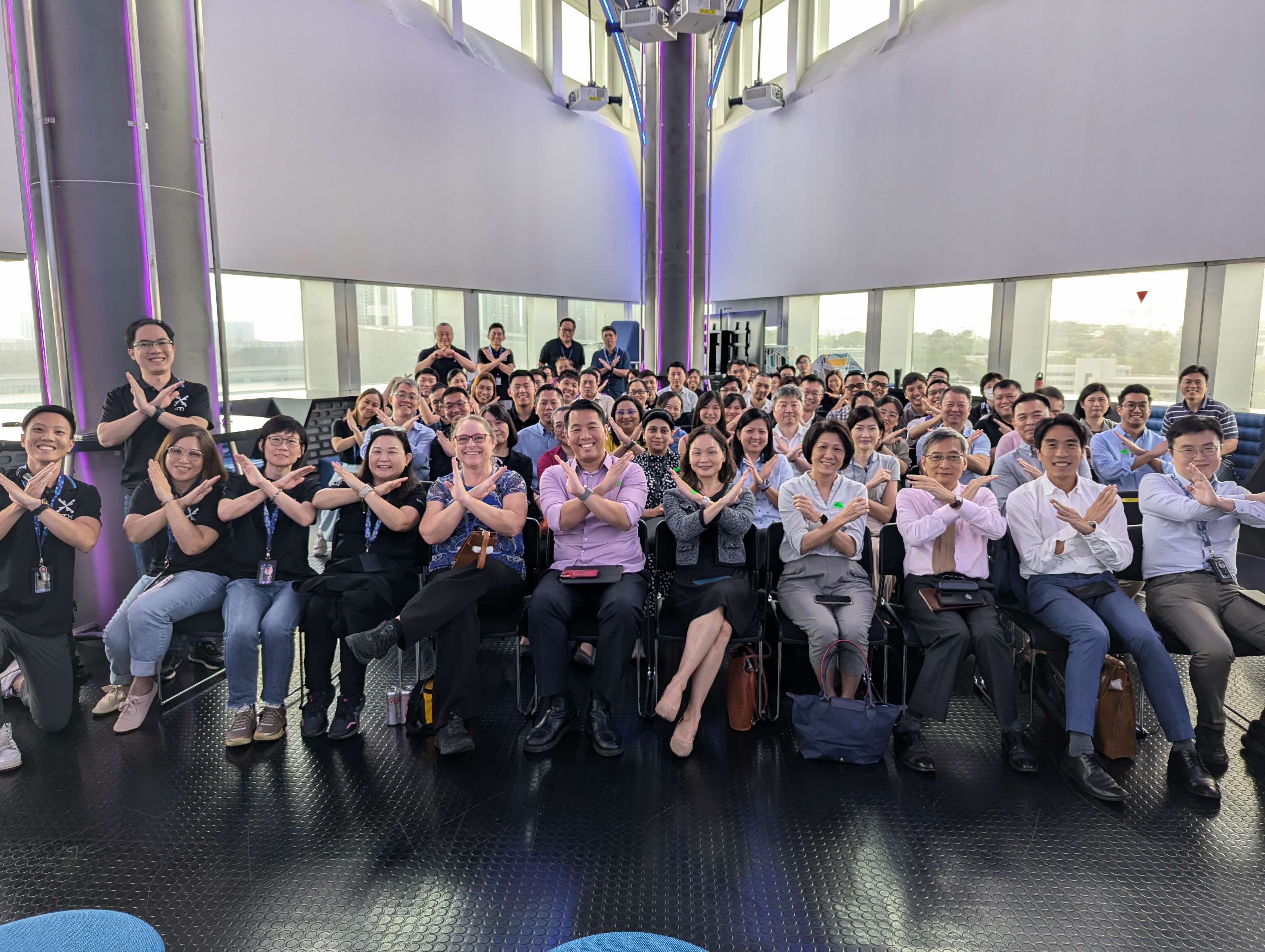
The speakers and members of the audience performing HTX’s “X” sign to mark the end of the seminar. (Photo: HTX)
Dr Angeline Yap, Assistant Group Director from HSA said: “I was very glad to attend the seminar as the speakers were all very knowledgeable and well-prepared. I particularly liked Dr Christina’s presentation as she helped us understand what the common upcoming threats in the environment are. The mix of government and private sector audience promoted interaction and collaboration.”
Alan Tan, Senior Vice President (Aerodrome and Aviation Security) from Changi Airport Group concurred.
“The seminar provided an exchange of knowledge that can bring greater awareness to how we can harness science and technology to address emerging threats. The range of topics was good as it spreads across specific cases, data-driven monitoring and analysis, and successful experimentation with simulation modelling,” he said. “The panel also brought up important perspectives of how science and technology will continue to evolve and this can be used to help us prepare for scenarios that we may not encounter in real life.”
Sandhya Nargund, General Manager from Shimadzu Asia Pacific Ltd, was another impressed audience member.
“This seminar was very insightful and helped us gain a better understanding of the CBRNE threats we are facing, and this will enable us to better support HTX in the development of scientific methodologies,” she said.
Ken Lee, Senior Scientist/Branch Head from SFA, added: “I found all the three presentations insightful, with a special shout-out to Dr Christina’s sharing. The Q&A session was particularly useful, as it allowed participants to ask targeted questions relevant to their specific areas.”